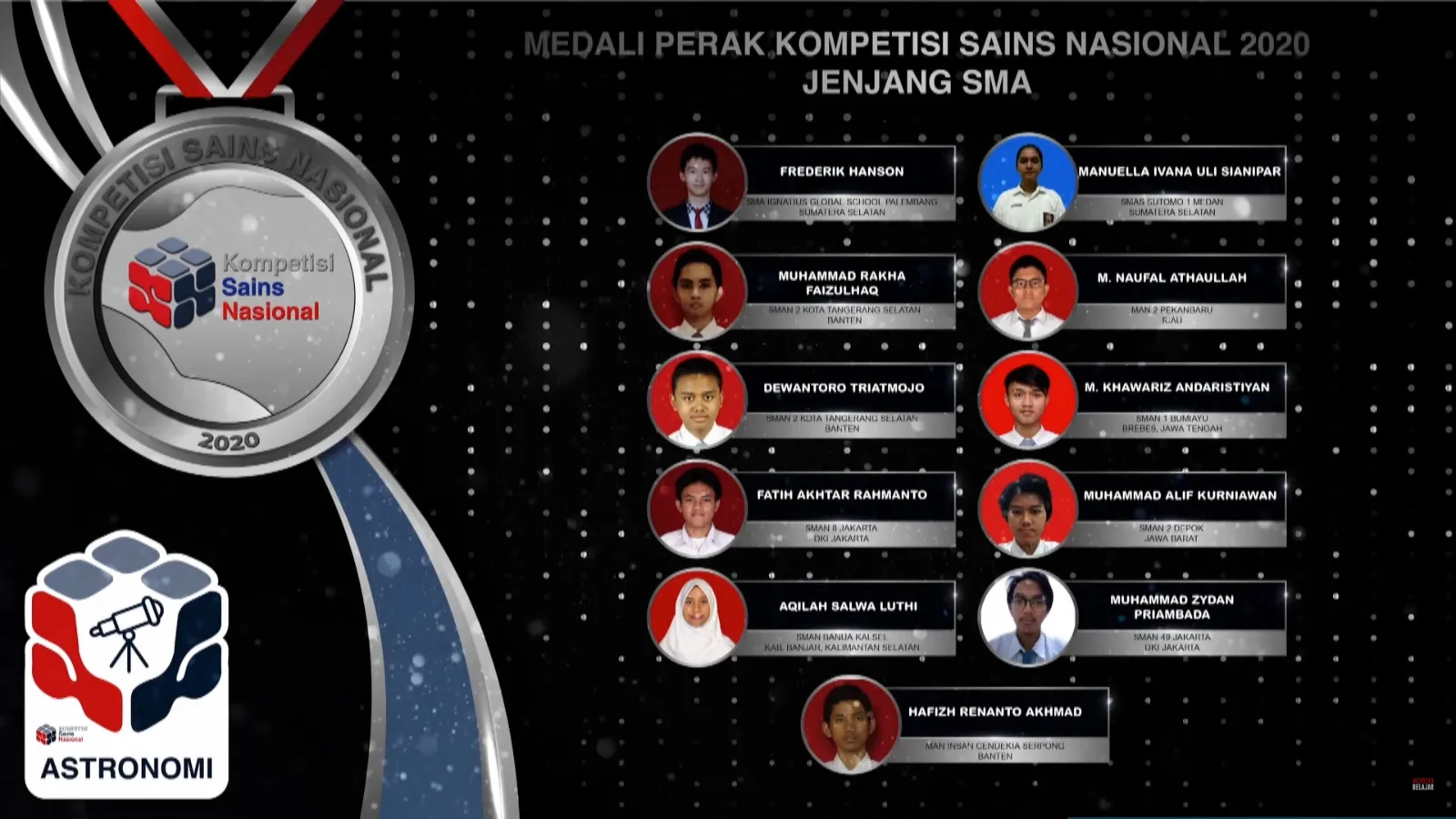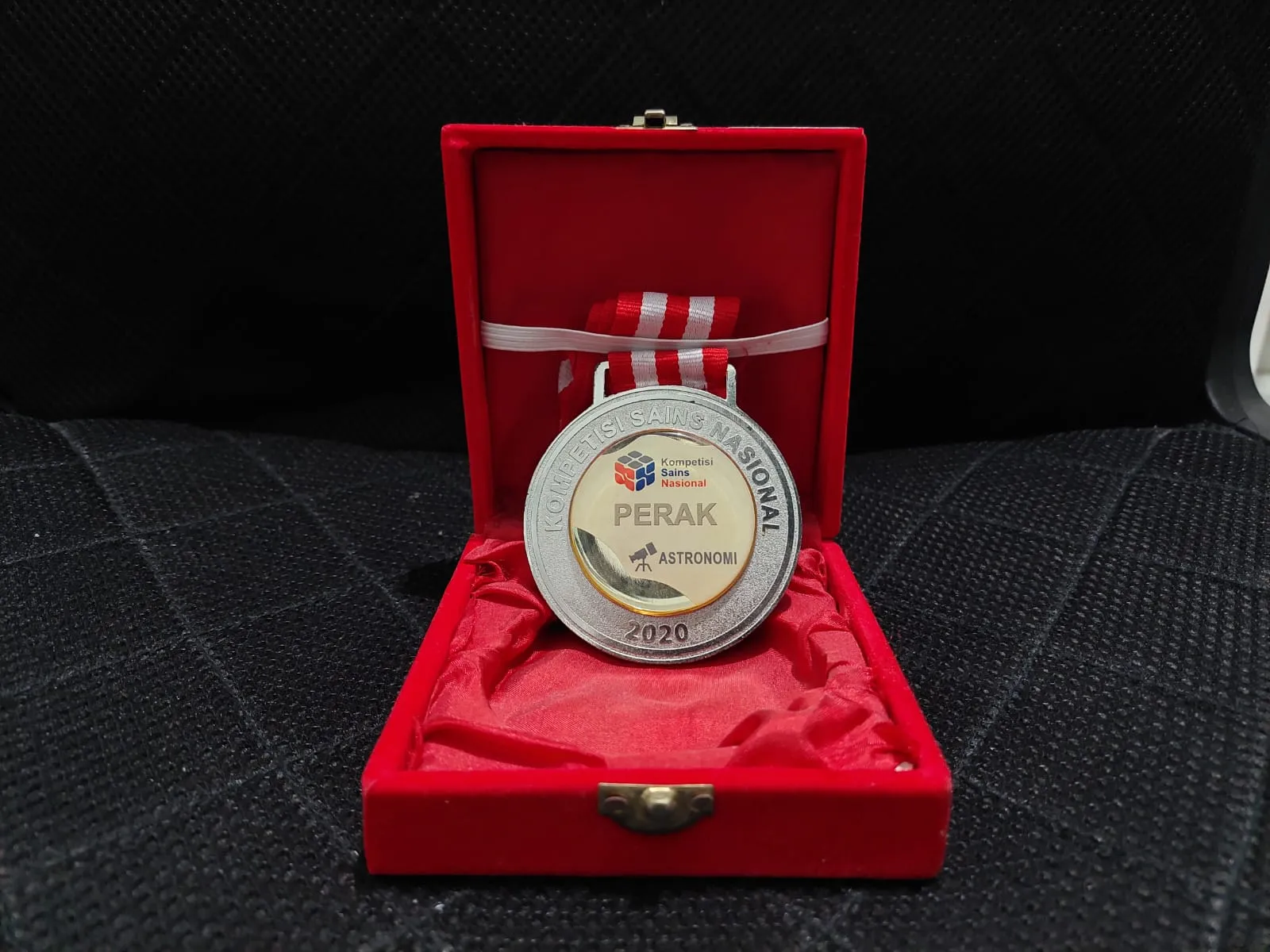🥈 Silver KSN Astronomy
- Kemendikbud

Description
The National Science Olympiad (OSN) is a talent competition in the field of science organized for students at the elementary (SD/MI), junior high (SMP/MTs), and high school (SMA/MA) levels, including their equivalents. The OSN is held in multiple stages, starting from regional levels up to the national level, to identify the best participants from 38 provinces. This tiered mechanism ensures equal and fair opportunities for students across Indonesia to achieve excellence and become potential talents.
Experience
KSK (Regency Stage)
Participating in the National Science Olympiad (OSN) was a significant milestone in my high school journey. When I first joined SMAN 2 Tangsel High School, I attended an introduction session for all the extracurricular activities available. One extracurricular that caught my eye was "MOSCOPIC," which stands for Moonzer Science Olympic Club. I remember receiving a brochure from one of the members, listing nine fields: Mathematics, Physics, Informatics, Chemistry, Biology, Astronomy, Economics, Earth Science, and Geography. My fascination with Astronomy, which began in junior high school, led me to choose this field without hesitation. I was captivated by images of the Milky Way, nebulae, and other celestial wonders.
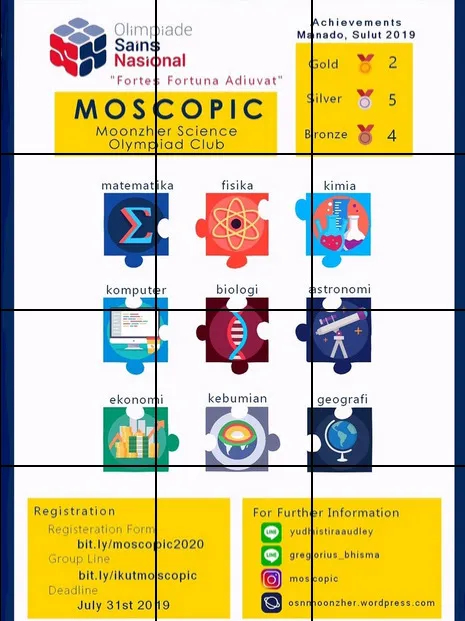
Initially, I attended the weekly training sessions conducted by my seniors without much commitment. I would attend the class, listen, and then go home. However, my journey took a serious turn during the first semester holiday in December 2019. I found myself thoroughly enjoying studying Astronomy, to the point where I even stopped playing games—a habit I’ve mostly kept to this day.
My senior advised me to register for the OSK simulation tryout by TOASTI , and I was added to a LINE group with hundreds of other future OSK participants and some TOASTI members, who were medalists from OSN 2019 or 2020. This group became an invaluable resource, allowing me to contact many medalists to ask questions about Astronomy ( Kak Ryo , Kak Razita , ect). I placed 8th in the tryout—not too impressive, but it was a start.
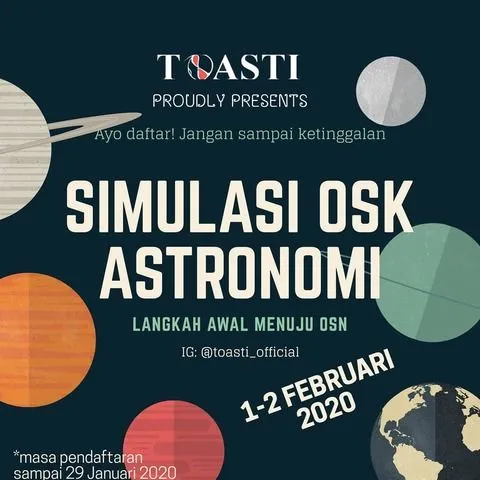

In early January, my school arranged a training session with my tutor, Kak Beta . I learned a lot from the problem sets he created, and his explanations were clear and insightful. One day, we had an intensive training session from 9.am until 8 p.m., after which we had dinner at a local warung pecel lele.

In February, my school partnered with OTC, an OSN trainer, to hold an OSK training session in Lembang. We traveled from Gambir Station to Bandung and then to Lembang. My tutor there was Kak Fajril , and I learned a great deal from him. I also had the opportunity to meet participants from other schools. I ranked 3rd or 4th in that training—not the best, but I was improving.

I noticed a name change from OSN to KSN (Kompetisi Sains Nasional). Some speculated it was to avoid confusion with the Olympics, but the exact reason remains unclear.
Before KSK, I participated in a small online competition by POSI. Some of us created a separate group called "Astronomi Elitis," where we studied together and asked questions. This group was solid, and most of its members are now studying at ITB. The group remains active to this day.
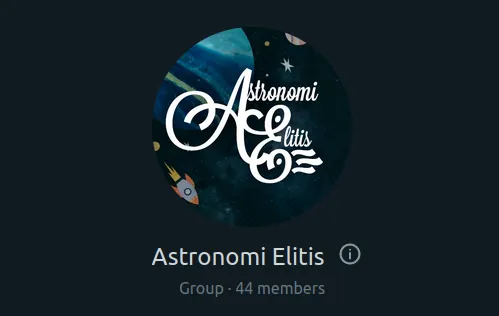
As the KSK approached on March 10th, I remember not owning a watch. Kak Beta advised me to get one since there might not be a clock in the test room. I got my first watch for my birthday and used it during the test, which went fairly well. I answered most questions and got 4th place, allowing me to proceed to KSP. I wasn't alone; Rakha , a senior, got 2nd place and proceeded to KSP
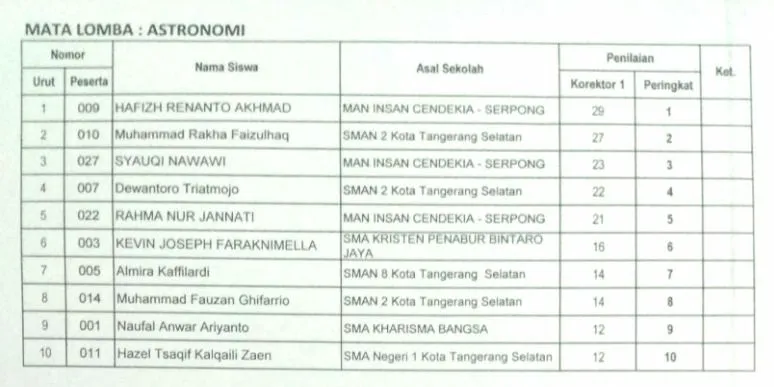
KSP (Province Stage)
When the Covid-19 lockdown started, I found the perfect opportunity to focus on KSP preparation. Online school was less draining, giving me more energy to study. I read books like "Fundamental Astronomy" and "Astronomy: Principles & Practice."
The gap between KSK and KSP was long, with KSP being held online in August 2020. During this period, I received training from my school, first with Kak Fajril (online) and then with Kak Hammam (offline). The problem sets from Kak Hammam were challenging but fun. In the end, I placed 3rd in KSP, and Rakha placed 4th, allowing us both to move on to KSN.

KSN (National Stage)
I began memorizing astronomy constellations for the observation round using an app called Stellarium, practicing data analysis from past problems, and tackling past theoretical problems. The observation part was Initially challenging (this is one of the reason I created Guess Astro ), but I eventually got the hang of it. My school also provides us with a training, again with Kak Hammam.

During KSN which was being held online in middle October 2020, I solved all the theoretical problems, though I realized too late that my calculator was set to radians instead of degrees. Fortunately, only one problem required trigonometry. Recalling to the quote:
Ignorance is bliss - Thomas Gray
One more funny thing is that I can recall that I was actually holding my pee for 1 hour because the room I was in was too cold and I am not allowed to leave my chair 🤣. Since then, I never turn on the A.C when doing online competition that doesn't let me leave my chair.
Then there's one problem that stands out in my memory because I felt incredibly fortunate to recall an equation from the "Fundamental Astronomy" book that perfectly solved it. What makes it special is that this particular equation was discussed in the "Solar System" chapter which most of it was just text explaining each detail of the planet. I think the problem was about atmosphere pressure in some planet? Maybe Venus? The differential equation used is something like this:
We also know from the density equation that
And also from the ideal gas equation that
Using the previous density equation we get
Finally, substitute it to the differential equation we get
We can define (scale height) as
which we can assume almost constant. Then we get
We can integrate this equation.
We get the pressure-height equation
And the density, temperature-height equation
Anyways, enough of the theory section. The data analysis problem was about the interstellar object Oumuamua. It's about the projection of the hyperbolic trajectory of Oumuamua into the sky (as time changes) and we were asked to find the object's movement parameter (radial speed, tangential speed, ect). I think I did this problem well. It's something looked liked this:

The observation part is a bit hazy, but I recall performing well. I think there's a problem about guessing the constellation name or circling it? I can recall that there's an instruction to use zoom annotation feature. Also, the day before the observation day we were guided to make two astronomy instrument that is a sun dial and a sextant. Those instruments were used to communicate the answer to the judge during the observation session.
In the end, Rakha and I both earned silver medals. KSN was a fun and rewarding experience, allowing me to meet many brilliant students from other schools. I'm also happy that the community I mentioned earlier, "Astronomi Elitis," had an incredible outcome, with a total of 13 members winning medals. This accomplishment reflects our dedication and the strength of our collaborative efforts. I am also grateful to the TOASTI '20 members, Kak Ryo, Kak Razita, and others for their support, as well as to my tutors, Kak Beta, Kak Hammam, and Kak Fajril.
